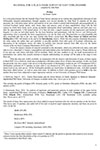

Timothy Pont, c. 1583 – 96map image courtesy of NLS
Polmaise was an early castle which was succeeded by a now-demolished 17th century house.
Early in the 14th century Edward I planned to build a pair of castles either side of the River Forth in order to protect the approach to Stirling. In 1304 or 1305 he sent writs to Sir John Sandale, Chamberlain of Scotland, instructing him to look for suitable sites for these castles. One of these writs was also sent to Sir John Segrave, 2nd Baron Segrave, warden south of the Forth, regarding a site at Polmaise, while the other was sent to John of Strathbogie, Earl of Atholl, warden between the Forth and Orkney, regarding “a castle at Tulibothevile.” It isn’t clear if the castle was built at Polmaise at that time however.
In February 1483 or 1484 Alexander Cunyngham de Polmas was confirmed in various lands including the sixth part of the lands of Elchquhok and Inchemertin. Alexander was a son of Isobel Glen, an Elcho and Inchmartine heiress, who had married secondly Robert Cunningham of Auchinbowie.
Easter Powmais is marked on Pont’s late 16th century map as a substantial tower surrounded by enclosed parkland.
In 1691 work was carried out which remodelled the tower as a three storey mansion and in the late 18th century it was extended with the addition of new wings.
The Murray family lived in the house until 1868 when they moved to the newly-built Polmaise Castle on the slopes of Gillies Hill near Cambusbarron. By 1958 what had become known as Old Polmaise House was roofless and was demolished soon after.
Alternative names for Polmaise Castle
E. Pomais; E. Powmais; Easter Polmaise; Easter Pomais; Easter Powmais; Old Polmaise House; Pollemase; Polmais-Cunynghame; Polmas; Polmase; Polmasse













